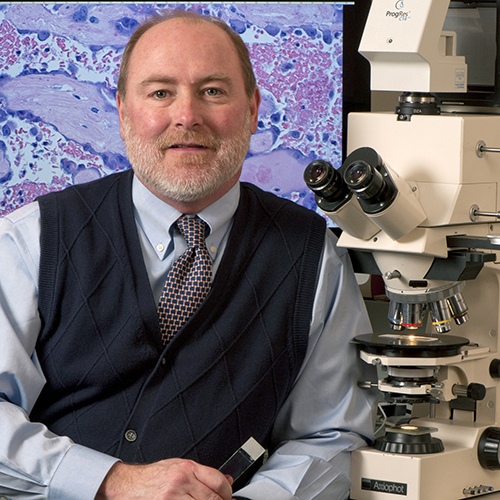
科学影像之美
我们很荣幸能够与美国约翰霍普金斯大学医学院的病理学摄影和图形艺术实验室主任,诺姆.巴克教授(Professor Norm Barker)交谈 。巴克教授对显微镜下的自然之美有著敏锐的洞察力。他拍摄的图像范围广泛,其中包括从十亿年前的化石到人体内的细胞。他的图像为50多本教科书所使用,并在多家杂志上发表过,而且还被史密森尼博物馆、乔治伊士曼故居博物馆、美国自然历史博物馆、纳尔逊-阿特金斯博物馆和伦敦科学博物馆在内的四十多家博物馆永久收藏。

他最近的作品,“恐龙骨骼”图像,获得了2021年尼康小世界显微摄影大赛的杰出影像奖。这张图像来自一块10亿年前的恐龙骨骼的小碎片。多亏了像巴克教授这样的显微摄影师,让公众可以看到栩栩如生的稀有化石图像。此外,通过将艺术与科学相联结,显微摄影师帮助了人们以一种不同的方式欣赏自然。
我们希望你喜欢下面的采访。
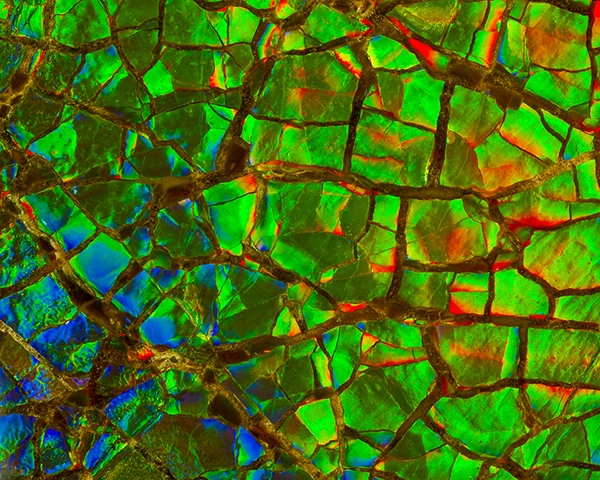
问: 请与我们分享你如何成为显微和微距的摄影专家。
答: 从马里兰艺术学院获得摄影学士学位后,我想继续读研究所,但是不得不支付账单。于是,我在约翰霍普金斯医学院担任生物医学摄影师,接受了为期两年的带薪培训。当时我并不知道什么是生物医学摄影,我想成为一名艺术家。没过多久就发现艺术不会支付账单。那是在70年代后期,这份工作的好处之一是,只要你去约翰霍普金斯大学,他们就可以在晚上支付研究生费用。我完成了教育硕士学位和出版物设计硕士学位,白天在霍普金斯大学工作,完成培训后被聘为员工。
目前我在马里兰州巴尔的摩的约翰霍普金斯大学医学病理学和艺术应用科系任教,为生物医学/科学摄影的终身教授,并担任病理学摄影和图形艺术实验室的主任。我的作品曾在数多的杂志、书籍上发表,并在世界各地的博物馆和巡回展览中展出。我的作品强调摄影的多样性,常常另令人难以置信;用显微镜和其他更传统的摄影设备,我把人们带入了一个肉眼看不到的世界。
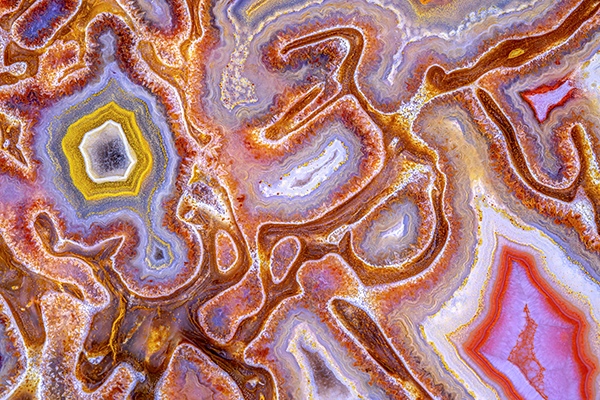
问: 你的“恐龙骨骼”图像在2021年尼康小世界显微摄影大赛中获得了杰出奖项。恭喜你!请与我们分享这张图像背后的故事以及你拍摄时所使用的设备。
答: 我在霍普金斯大学已经41年了,这期间,我接触了许多领域。生物医学/科学摄影师的不寻常之处在于,他或她需要精通并应用属于成像科学的所有专业技术。而且,他们还需要熟悉其他各种不同的领域,例如肖像画、工作室/外景、公共关系、建筑,仅举几例。这些均涵盖于我们的正常工作职责之内,以及每天所面临的领域中。在病理科工作,我专攻显微摄影(显微镜下的摄影)。显微镜提供了一个完全不同的美丽世界,如果做得正确,可以提供科学和艺术之间的接口。当你将其中一些标本握在手中时,你会发现在许多情况下,这些化石材料已有数亿年的历史,这真是太神奇了!
这块小恐龙骨头是用蔡司显微镜和特殊的蔡司Luminar、f4.5、40毫米微距镜头所拍摄,标本带有RMS螺纹。照明是用光纤完成的,样品被涂上矿物油以减少任何反射和切割痕迹。数百万年以来,实际样品已被矿化或替换为矽化合物,如玛瑙、碧玉、蛋白石或钙质。
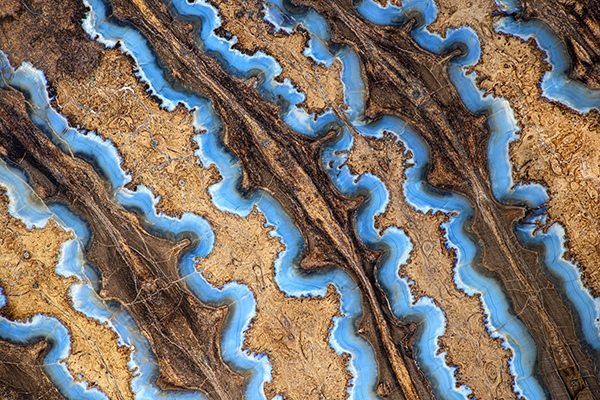
问: 你似乎对远古微观世界很感兴趣。请与我们分享你的一些发现和你对拍摄化石的建议。
答: 我工作的一大好处是我可以与世界上一些顶尖的科学家和研究人员合作。我的作品发表在各领域中,从自然科学,到阁楼、史密森尼和自然历史等杂志。我也有幸参与了50 多本教科书、分册和地图集的工作,在那里我完成了许多的摄影工作,并为这些书提供了数千张显微图像。我刚刚在一本名为”Natural Science Imaging and Photography”、Michael Peres编辑、Focal Press出版的书中,发表了一章关于化石、矿物和地质摄影。
二十年前,我与友人合著了一本书,名为《远古微观世界》,”Ancient Microworlds”,该书在过去的十二年中一直在美国、欧洲和亚洲,做巡回展出。超过一百万的博物馆参观者看过这本书中所登载的图像。我的作品也曾在史密森学会、纽约自然历史博物馆、伦敦科学博物馆以及堪萨斯城的纳尔逊-阿特金斯艺术博物馆等场所展出。我的个人作品被40多家博物馆永久收藏。另一本名为《海藻:海洋奇观》,“Seaweeds: Wonders of the Ocean Realm”的书也有巡回展览,并在2006年,开幕于南卡罗来纳州的查尔斯顿博物馆。

问: 请与我们分享你最近出版的书《隐藏之美:探索医学中的美学”》,“Hidden Beauty: Exploring the Aesthetics of Medical Science”。是什么促使你写这本书?
答: 显然,我们在研究中看到了令人著迷的人体,人体是一台了不起的天然机器。我们也喜欢接触科学中所有不同的知识分支。有一天,我可能会拍摄一头大象的尸检,它的心脏看起来几乎像人类的心脏,但重达40磅,或者我可能会拍摄稀有的15世纪手稿。我们永远不知道大型学术医疗中心会要求我们承担什么样的任务。Shiffer图书出版的《隐藏的美丽:探索医学美学》一书的整个想法是将艺术和科学相结,展示了艺术家和科学家的合作成果。我们想分享在研究时所观察到的人体之美,其中使用了MRI,电脑和显微镜等,所有不同类型的成像方式,
问: 什么是解剖病理学?人们如何利用解剖病理学来诊断疾病?它与其他的成像形式有何不同?
答: 解剖病理学是一门医学专业,涉及组织和器官的显微评估以及尸检程序的疾病研究和诊断。在整个病理学学科中,有许多专业领域,例如临床实验室医学、外科病理学和法医病理学等等。在大型学术医疗中心,可能有几位病理学家只专注于一个器官系统,例如肾脏病理学家、妇产科病理学家或神经病理学家。

问: 请与我们分享你在职业中的一些难忘经历。
答: 这是一个很难回答的问题。多年以来,我拍摄了很多非常不寻常的图像。在我工作中,最有趣的方面是我可以和一些非常聪明和有创造力的人一起工作,包括研究生、住院医师、研究员和博士后,当然还有世界上许多顶尖的医学人才。我真的很喜欢在医学艺术系教导学生从事医学方面的多媒体创作,他们才华横溢,他们的工作(从插画到影视)和创造力令人惊叹。
问: 对于有抱负的显微摄影师,尤其是在医学领域,你有什么建议?
答: 医学显微镜专家通常从事与特定学科或专业领域相关的科目,例如,细胞生物学,眼科或病理学。他们将显微镜用于发现、记录和出版,并将图像登戴在科学期刊或教科书中。
有许多业余显微镜专家使用显微镜来探索一个看不见的世界。大多数人第一次接触显微镜是在高中生物课。在1800 年代和世纪之交时,显微镜被许多人用作娱乐和探索微观世界的工具。从那里开始,有些人受到启发,继续去学习科学或医学。

问: 根据你的专业经验,你从人体和自然中学到了什么?
答: 人体是一台极其复杂的机器,即使采用了所有的21世纪技术,仍然不知道还有多少令人惊讶的未知事物,等待著我们发掘,例如,人类的大脑。就在100多年前,神经外科这个亚专业出现了,这是因为西班牙病理学家和显微镜学家Santiago Ramón y Cajal发现了大脑通过中细胞突触之间发送信号,进行交流。他的这项发现,引发了一场革命,他也因此获得了诺贝尔奖,并被认为是现代神经科学之父。他还是一位艺术家,他用显微镜绘制了自己的观察插图,这些插图本身就是令人惊叹的美丽艺术品。进入2022年,令人惊讶的是,虽然我们对这个复杂的器官已经了解了许多,但未知的领域还有很多,我们将继续研究和学习。
问: 你目前参与的项目,有哪些想要与我们的读者分享?
答: 我正在参与一个名为“科学图像 3”的合作巡回展览。这个巡回展览,https://images.cad.rit.edu/gallery2019.html,目前正在北伊利诺伊大学展出,其中包含来自20个不同国家的80幅科学图像,有照片、插图和视频。这个展览展示了世界上一些顶级的科学成像。
另外,我刚刚出版了一本名为Noted Realities的新书,这本书是对细心观察的赞美。作为仔细观察后的成像,首先是专注于某事物。它们有话要说,超出了快速快照所能捕捉到的范围,因为它们是有意识和细心关注后的结果。因为使用高度有条理的方法,人们能够观察、分析和记录光在物体上的表现,注意偶然的并置和特殊比例的关系,并欣赏生活中,从平凡变得不平凡的转变。正如我之前所说,我的工作处于艺术和科学的过渡阶段,有时艺术多于科学,有时科学多于艺术。
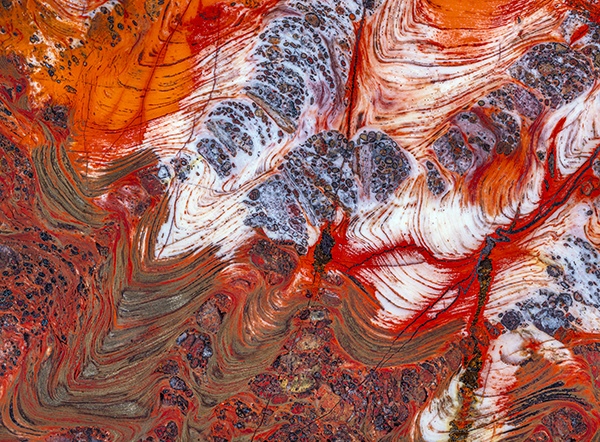
我们感谢巴克教授花时间回答我们的采访问题。如果你对他的图像感兴趣,请务必查看他的一些书籍,其中详细介绍了他过去所拍摄的图像。